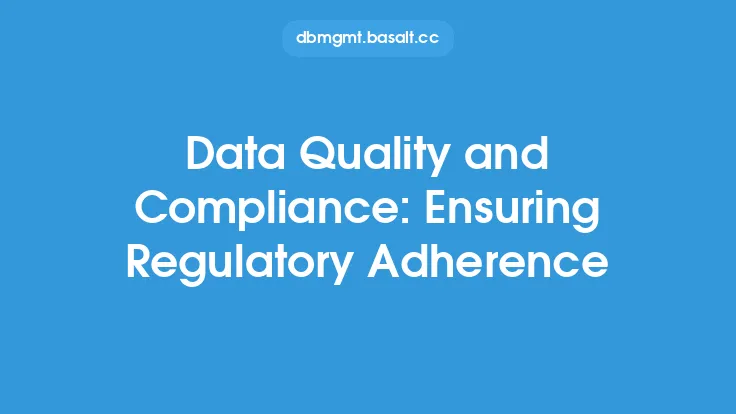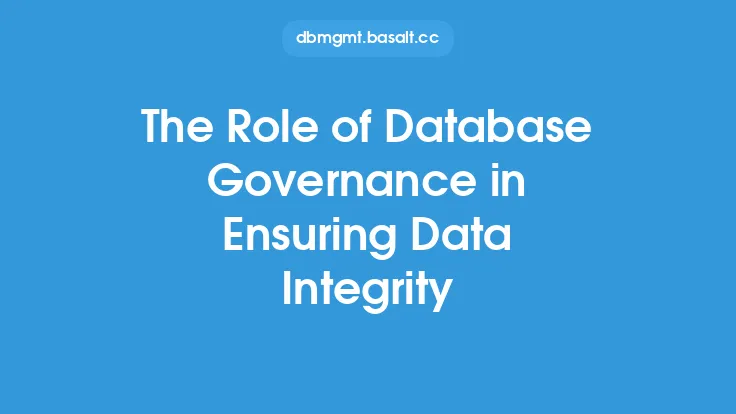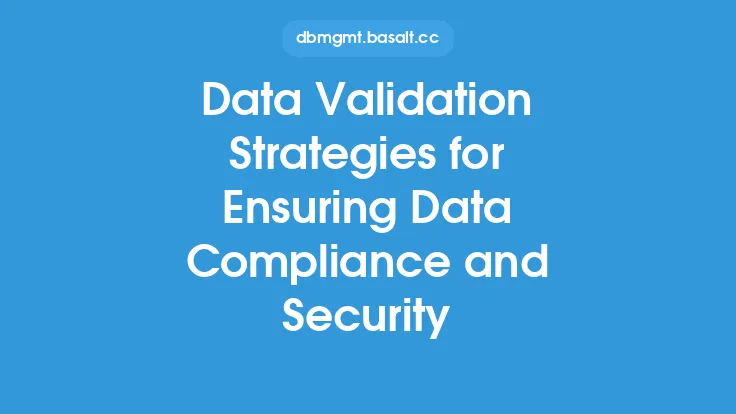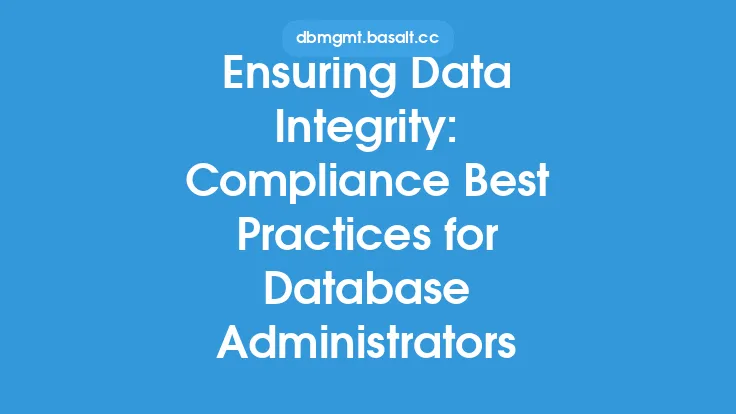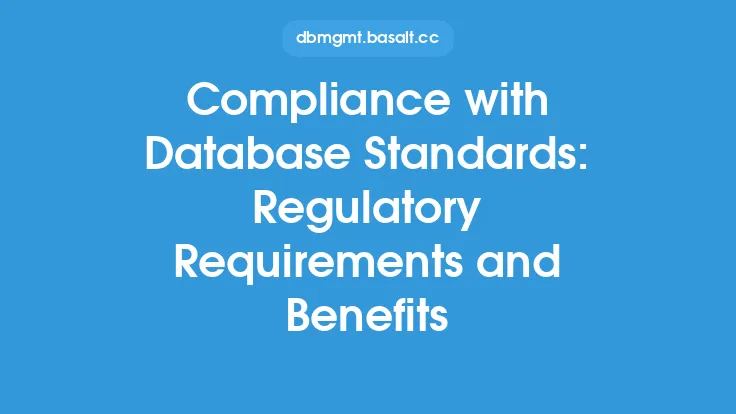Ensuring compliance with data protection laws is a critical aspect of database security, as it helps to protect sensitive information from unauthorized access, theft, or damage. With the increasing amount of personal and sensitive data being stored in databases, it is essential for organizations to implement robust compliance measures to avoid hefty fines, reputational damage, and legal consequences. In this article, we will delve into the key aspects of ensuring compliance with data protection laws, including the importance of data classification, access control, encryption, auditing, and training.
Introduction to Data Protection Laws
Data protection laws are designed to safeguard personal and sensitive information from unauthorized access, disclosure, or destruction. These laws vary by country and region, but most share common principles, such as requiring organizations to implement reasonable security measures, obtain consent from individuals before collecting their data, and provide individuals with access to their data. Some notable data protection laws include the General Data Protection Regulation (GDPR) in the European Union, the California Consumer Privacy Act (CCPA) in the United States, and the Personal Information Protection and Electronic Documents Act (PIPEDA) in Canada.
Data Classification and Categorization
Data classification and categorization are essential steps in ensuring compliance with data protection laws. Organizations must identify and categorize their data based on its sensitivity and importance, and then implement appropriate security measures to protect it. Data can be classified into different categories, such as public, internal, confidential, and restricted. Public data is openly available and does not require any special protection, while internal data is shared within the organization and requires some level of access control. Confidential data is sensitive and requires robust security measures, such as encryption and access controls, while restricted data is highly sensitive and requires the highest level of protection.
Access Control and Authentication
Access control and authentication are critical components of ensuring compliance with data protection laws. Organizations must implement robust access controls to ensure that only authorized personnel can access sensitive data. This can be achieved through various measures, such as role-based access control, multi-factor authentication, and least privilege access. Role-based access control involves assigning access rights based on an individual's role within the organization, while multi-factor authentication requires individuals to provide multiple forms of verification, such as a password and a fingerprint, to access sensitive data. Least privilege access involves granting individuals only the access rights they need to perform their job functions.
Encryption and Data Protection
Encryption is a critical component of ensuring compliance with data protection laws. Organizations must encrypt sensitive data both in transit and at rest to protect it from unauthorized access. Encryption involves converting plaintext data into unreadable ciphertext, which can only be decrypted with the appropriate decryption key. There are various encryption algorithms and protocols available, such as Advanced Encryption Standard (AES) and Transport Layer Security (TLS). AES is a symmetric-key block cipher that is widely used to encrypt data at rest, while TLS is a cryptographic protocol that is used to encrypt data in transit.
Auditing and Monitoring
Auditing and monitoring are essential components of ensuring compliance with data protection laws. Organizations must regularly audit and monitor their databases to detect and respond to security incidents, such as data breaches or unauthorized access. Auditing involves reviewing database logs and records to identify potential security incidents, while monitoring involves real-time tracking of database activity to detect and respond to security incidents. Organizations can use various tools and technologies, such as database auditing software and security information and event management (SIEM) systems, to audit and monitor their databases.
Training and Awareness
Training and awareness are critical components of ensuring compliance with data protection laws. Organizations must provide regular training and awareness programs to their employees to educate them on data protection best practices and the importance of compliance. This can include training on data classification, access control, encryption, and auditing, as well as awareness programs on the consequences of non-compliance. Organizations can use various methods, such as online training modules, workshops, and phishing simulations, to educate their employees on data protection best practices.
Technical Implementation
From a technical perspective, ensuring compliance with data protection laws requires a range of measures, including data encryption, access controls, auditing, and monitoring. Organizations can use various technologies, such as database management systems, encryption software, and security information and event management (SIEM) systems, to implement these measures. For example, database management systems, such as Oracle and Microsoft SQL Server, provide built-in security features, such as encryption and access controls, to protect sensitive data. Encryption software, such as AES and TLS, can be used to encrypt data both in transit and at rest. SIEM systems, such as Splunk and IBM QRadar, can be used to monitor and audit database activity in real-time.
Best Practices for Compliance
To ensure compliance with data protection laws, organizations should follow best practices, such as implementing a data protection policy, conducting regular risk assessments, and providing regular training and awareness programs. A data protection policy outlines the organization's approach to data protection, including data classification, access control, encryption, and auditing. Regular risk assessments involve identifying and mitigating potential security risks, such as data breaches or unauthorized access. Regular training and awareness programs educate employees on data protection best practices and the importance of compliance.
Conclusion
In conclusion, ensuring compliance with data protection laws is a critical aspect of database security. Organizations must implement robust compliance measures, including data classification, access control, encryption, auditing, and training, to protect sensitive information from unauthorized access, theft, or damage. By following best practices, such as implementing a data protection policy, conducting regular risk assessments, and providing regular training and awareness programs, organizations can ensure compliance with data protection laws and avoid hefty fines, reputational damage, and legal consequences.
